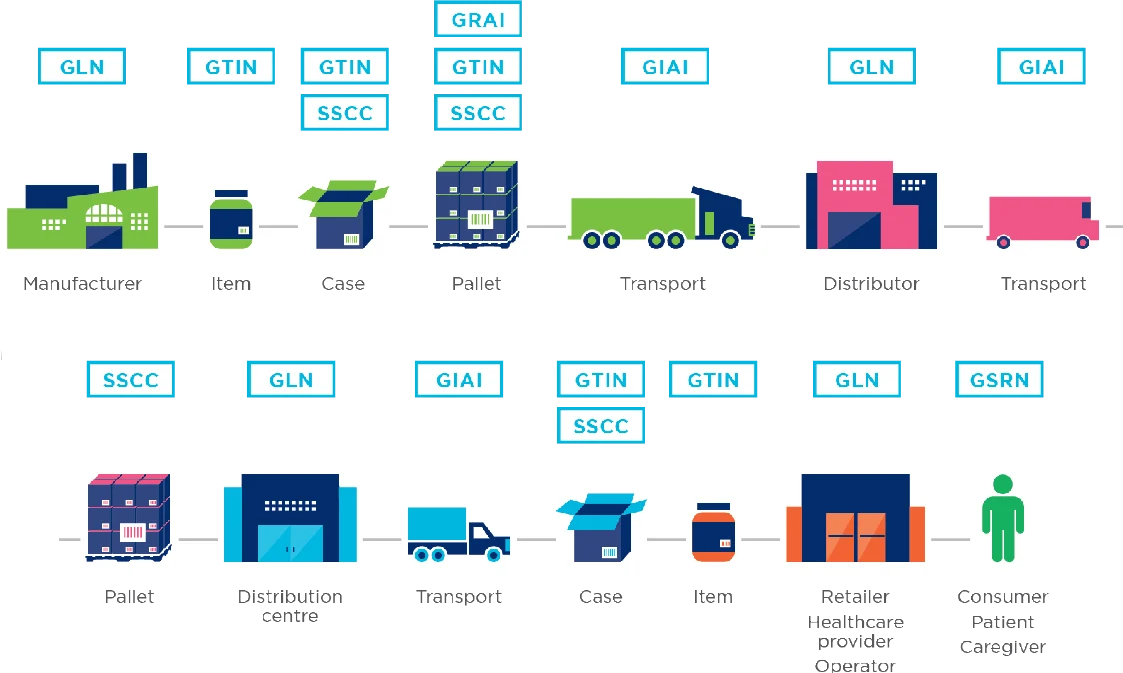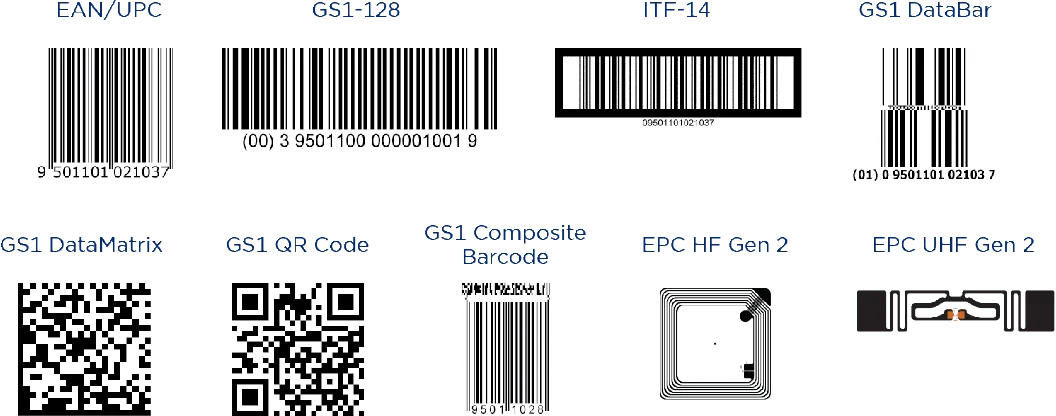What Are Standards?
A standard is an agreed way of doing something from creating a product, managing a process, to providing a service. Standards exist across industries and help ensure consistency, quality, and safety.
They capture the collective expertise and best practices of manufacturers, sellers, buyers, customers, trade associations, and regulators. By following standards, organizations can operate more efficiently and confidently.

Identify
Uniquely identify products, places and things

Capture
Capture identity and more in a barcode or RFID tag

Share
Share data with trading partners, consumers and patients
How GS1 Standards Help Businesses?
GS1 standards are a global language for businesses. They allow organizations to identify, capture, and share information in the same way everywhere in the world.
By adopting these standards, organizations can ensure that the right product is in the right place at the right time. This benefits both businesses and consumers.
For Businesses:
- Improved Efficiency: Optimize processes, reduce communication errors, and accelerate business transactions.
- Enhanced Traceability: Track products accurately throughout the supply chain, from manufacturer to consumer.
- Cost Reduction: Minimize operational costs and implementation.
- Greater Accuracy: Reduce manual data entry errors through automated data capture.
- Better Inventory Management: Achieve real-time visibility into inventory levels, preventing overstocking and stock-outs.
- Increased Consumer Trust: Build confidence by providing transparent and accurate product information.
For Consumers:
- Better Informed: Access detailed and accurate product information, empowering purchasing decisions.
- Easier Product Discovery: Find desired products more readily.
- Improved Protection: Benefit from enhanced traceability, ensuring product safety.
Key Aspects of GS1 Standards
GS1 standards cover three main areas:
1. Standards that identify (Identify products, assets, locations and more)
GS1 provides globally recognized identification unique keys to identify products, assets, locations and more. These identifiers work in both physical and digital worlds across the supply chain, from manufacturers to consumers. When you become a GS1 Lanka member you are assigned a GS1 Company Prefix. This is the number of which is the foundational number used to create different GS1 identifiers.
Key GS1 Identifiers:
- I. Global Trade Item Number (GTIN): A GS1 GTIN is a unique identification number for an item or product and can be used to identify your products at any packaging level.
- GTIN 13: This 13-digit code primarily for marking products sold at retail point of sale.
- GTIN 8: This 8-digit code is used on small packages where a GTIN 13 would be too large.
- GTIN 14 (ITF-14): Generally used on higher packaging levels of a product (e.g., cases or cartons) and on cases, pallets, and logistic units in general distribution. It is not for retail point-of-sales.
- II. Global Location Number (GLN): A GS1 standard used for identifying locations to improve efficiency and visibility within the supply chain.

2. Standards for capturing information
Barcodes make it easy to capture product data automatically. They bridge the physical world and digital information, enabling quick identification and tracking of products through the supply chain.
There are several types of barcodes that are used depending on the business requirements.
EAN /GTIN 13 : Used for marking products sold at retail point-of-sale, the EAN/GTIN-13 barcode is a 13-digit code that also plays a crucial role in general distribution. It facilitates seamless inventory management, reduces errors, and ensures efficient tracking across the entire supply chain, making it essential for both retailers and distributors.
ITF-14: Used primarily in logistics, the ITF-14 barcode simplifies tracking for bulk shipments like cartons and pallets. This 14-digit code streamlines inventory management by ensuring accurate and efficient scanning of outer packaging, reducing errors in the process.
As part of the GS1 global standard, it offers businesses a reliable way to manage large shipments and improve operational efficiency across the supply chain.

3. Standards for sharing information (Efficient sharing of information from trusted and authentic sources.)
These standards enable the efficient sharing of information from trusted and authentic sources. GS1 standards that power organizations to share information. Sharing standardized data electronically with business partners has many benefits, including reducing communication errors, increasing the speed of business transactions, and supporting real-time product information updates.
